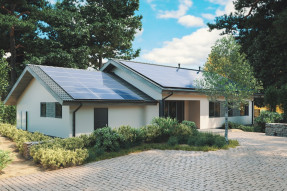Housing affordability rose about 8% in the last 4 weeks as mortgage rates moved closer to 6%. If inflation continues to slow down, mortgage rates may stabilize near 6% in 2023.
Even with the increasing number of layoffs in some industries, the overall job market remains strong.
The rate on a 30-year fixed mortgage fell to 6.49% from 6.58% the previous week. As a result, the monthly mortgage payment for a median-priced home dropped by $140 in the last three weeks.
October’s existing home sales reached a 4.43 million seasonally adjusted annual rate, declining 28.4% from October 2021.
Forty-six percent of the metro markets posted double-digit annual price appreciation in Q3 2022 compared to 80% in Q2, and national median prices rose 8.6% year-over-year to $398,500.
Housing affordability fell in September 2022 compared to August, with the monthly mortgage payment increasing by 8.0% and the median family income increasing by 0.6%.
The 30-year fixed mortgage rate fell to 6.61% from 7.08% the previous week. As a result, owning a home is 5% less expensive than it was a week ago.
Housing starts in October 2022 fell to 1.425 million annualized units, implying we may face shortage conditions. Apartment buildings remain robust, with a 17% gain from a year ago, but single-family starts are 21% below one year ago and well below historical averages.
With changing priorities and preferences, higher home prices, and a rapid increase in remote work, many Americans left central urban areas during the pandemic.
The housing market has shifted from a low-interest rate, low-inventory environment with bidding wars and frenzied activity to a higher interest rate but still low inventory environment.
Search Economists' Outlook




























